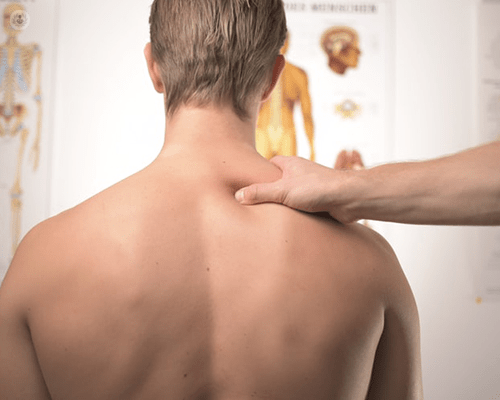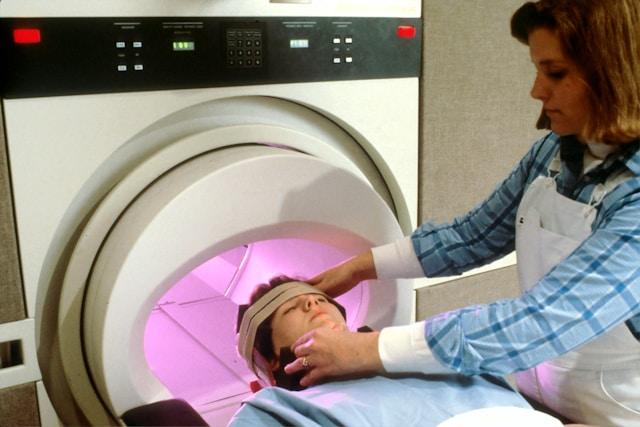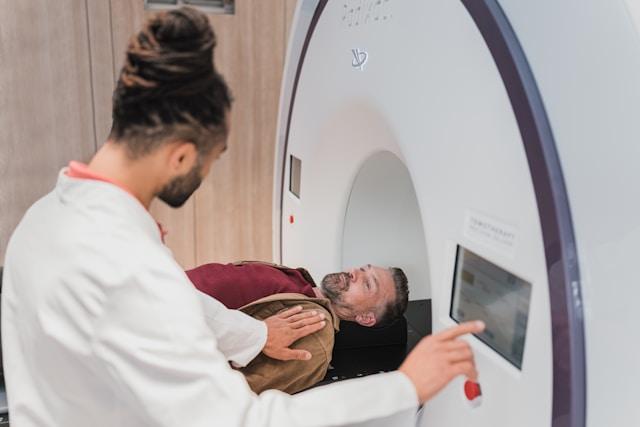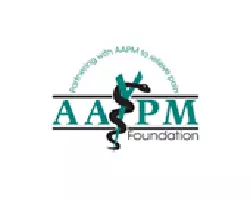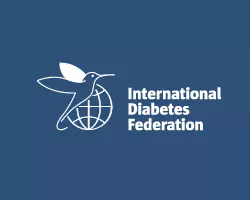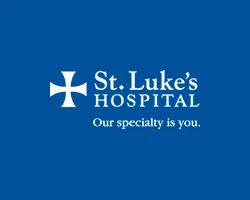What is thoracic outlet syndrome?
The thoracic outlet is a small space just behind and below your collarbone. The blood vessels and nerves that serve your arm and shoulder are located in this space. Thoracic outlet syndrome (TOS) is the presence of a mixture of hand, arm, shoulder and neck symptoms. All of these symptoms are due to pressure (or compression) against the nerves (called the brachial plexus) or blood vessels within the scalene triangle at the thoracic outlet.
There are 3 types of TOS. (nerve, vein, or artery)
Ninety-five percent (95%) of all cases of TOS are Neurogenic, which is compression of the nerves to the arm and shoulder. Venous TOS occurs only 3 to 4 percent of the time and is due to obstruction or clotting of the main vein to the arm, the subclavian vein. Arterial TOS, is the rarest type, occurring in only 1 percent of cases, and it is due to disease in the artery leading to the arm, the subclavian artery. Almost all cases of arterial TOS are associated with an extra rib (cervical rib) or an abnormal first rib.
What are the symptoms?
The common symptoms depend on which structure is being compressed.
Neurogenic TOS (nTOS), the symptoms are pain, numbness, tingling, and/or weakness in the arm and hand. Also common is a tired feeling in your arm, which is made worse by working with your arms raised over your head. Neck pain and headaches in the back of your head are also frequent symptoms. Another common occurrence is pain that starts in your shoulder and runs down your arm, as well as pain in your fingertips. One can even experience facial pain, jaw pain, ear pain and pain on the front of your chest. Unfortunately, the symptoms of neurogenic TOS can be vague and non-specific.
Venous TOS (vTOS) is distinguished by swelling in your entire arm, plus pain and dark discoloration.
Arterial TOS (aTOS) presents with pain, coldness, and a pale discoloration of the hand. Cramps occur when using the arm for activity.
What causes thoracic outlet syndrome?
Neurogenic TOS is most often the result of neck trauma such as a whiplash injury. Motor vehicle accidents, traction injuries to shoulder, slipping and falling on floors or ice, blunt injury to base of neck or top of shoulder, or repetitive stress from working on assembly lines are the common causes.
The symptoms are due to trauma and scar tissue formation in; neck muscles (called scalene muscles) and the nerves (brachial plexus). Congenital deformities of the first rib or having an anomalous cervical rib or band significantly increases the risk of acquiring this condition. Ultimately, the cause is compression and tethering of the brachial plexus nerves at the thoracic outlet.
Venous TOS is commonly due to strenuous use of the arm and shoulder. Its underlying cause is congenital narrowing of the space through which the major arm vein (subclavian vein) passes from the shoulder area into the heart.
Arterial TOS is caused by a narrowing in the main artery to the arm (subclavian artery), usually secondary to a congenital extra rib (cervical rib) or to an abnormal first rib. Once the artery has been narrowed, one of two things will occur. The artery may enlarge, forming an aneurysm just beyond the narrowing, and a clot will form in the wall of the aneurysm; or the artery may remain narrowed and a clot will form inside the artery just beyond the narrowing. The danger of the clot is that pieces of it will break off (called emboli) and travel down the arm to block the circulation to your hand. When this occurs, the hand becomes cold, numb, painful, and discolored and you are in danger of losing your hand. Treatment to restore circulation is essential.
How is thoracic outlet diagnosed?
Diagnosing TOS can be complex. It begins by your physician asking you a series of questions to find out your symptoms, the distribution of these symptoms and and how the symptoms began. Depending on your symptoms, the doctor will be able to tell if you might have a nerve, vein, or artery compression. An appropriate physical examination will be beneficial in determining your diagnosis as well. It is not uncommon that patients have seen several physicians and have been evaluated for cervical neck problems and shoulder problems prior to the referral for evaluation of thoracic outlet syndrome.
For neurogenic TOS, your physician will have you perform a number of provocative maneuvers. These consist of putting your neck and arms in different positions of stress to try to reproduce your symptoms. Other physical findings include tenderness in certain places in your neck, chest, or arms. New technologies such as 3-Tesla MR neurography are helpful in establishing level of injuries and anomalous anatomy and may be requested in addition to traditional xrays.
For venous TOS, physical examination consists primarily of noting swelling in your arm and prominent veins seen just under the skin at the spot where your shoulder joins your chest.
In arterial TOS, physical exam often finds the pulse at your wrist is diminished or absent. Your hand may have a pale color compared to your pink, good hand.
Venous and arterial TOS are best diagnosed with the aid of specific tests, venography for venous TOS and pulse volume or arteriography for arterial TOS.
How is thoracic outlet syndrome treated?
Your particular treatment will depend on the type of TOS you have. Determined by your symptoms, physical examination and test results.
Neurogenic (nTOS) is initially treated with physical therapy. The basic therapy methods include stretching exercises of your neck, posture correction, learning to avoid specific movements that bring on or aggravate your symptoms, and modifying your work site when appropriate. While some therapists may suggest strengthening exercises, most patients with neurogenic TOS are made worse by strengthening exercises. Treatment with a therapist for a few weeks is usually followed by a home exercise program, which you continue on your own for at least several more weeks.
The doctor may also prescribe medications such as muscle relaxants, non-steroidal anti-inflammatory drugs such as aspirin or ibuprofen, pain relievers, or steroids. In addition, some patients get relief by applying moist heat or massaging and stretching the affected area.
When early conservative therapies are failing and there are significant painful symptoms, a diagnostic and/or therapeutic injection may be utilized. This involves an ultrasound guided injection that has numbing agents and steroid. Our technique can give significant temporary relief or can sometimes actually resolve the condition. Further, we have developed novel techniques that utilize our biologic therapeutics. Candidates are determined by responses to initial diagnostic injections and the symptoms they are experiencing.
When treatment begins in the early stages of neurogenic TOS, a majority of patients improve with the measures listed above. However, if your nTOS symptoms do not improve with these measures, and if your symptoms are interfering with sleep, work, recreation, or activities of daily living, more aggressive treatment may be recommended. The surgeon may recommend surgical decompression.
Surgery for nTOS involves removing certain muscles in your neck and cleaning scar tissue off the nerves of the brachial plexus. The anterior and middle scalene muscles are the muscles making the scalene triangle in the neck at the thoracic outlet. These muscles are a source of the pathology and injury to them will cause compression to the brachial plexus nerves. There are many redundant muscles in the neck, allowing for us to release or resect one or both of these muscles. Additionally, the nerves at this level need to be released from scar tissue or fibrosis that have formed around them. This encasing tissue is much like shrink-wrap and causes both compression and tethering of the nerve. Releasing this tissue relieves compression and re-establishes the much needed gliding surfaces of these nerves.
Resection of the first rib is unnecessary in nTOS except in the rare case (<1%) of a cervical rib or first rib anomaly. Modern studies show there is no difference in outcomes, which advocates for not resecting a normal first rib. Resection of the first rib is associated with a higher rate of complications and higher rates of post-operative chronic pain. Further, without the rib resection the invasiveness of the surgery is less and the recovery is easier.
Surgery for thoracic outlet syndrome, however, is never without risks. There are vital structures in this part of the body that can be injured during TOS decompression surgery. Rates of complications are very low but they are not zero. These rare problems include; persistence of pain, hematoma, phrenic nerve injury, surgical infection, nerve injury resulting hand or arm dysfunction, surgical site infection, arterial injury or pneumothorax
In addition, surgery does not always relieve the symptoms of neurogenic TOS. Our success rate is currently 80 to 90%. Larger studies evaluating outcomes from surgery for neurogenic TOS demonstrate that only up to 70 percent of patients have improvement in their symptoms, while 30 percent may feel no better or worse. We feel that our success rate is higher based upon rigorous patient selection and because we rarely recommend the first rib resection.
Venous TOS is not treated with physical therapy. Rather, the clot in the vein is initially treated with clot dissolving medication (called thrombolysis), with blood thinners (anticoagulants), or sometimes treated by surgically opening the vein and removing the clot. Once the clot has been removed, your surgeon may recommend that the first rib be removed so that the narrow space through which the vein passed can be enlarged to prevent the vein from clotting again. If the vein is badly narrowed, the narrow spot can be widened by having a balloon stretch out the vein, a procedure called an angioplasty. In some instances, the vein will be repaired operatively, at the time of the rib removal, with a patch (made from another vein) or with replacement of the diseased segment of vein.
Arterial TOS is treated in a very different way. If the subclavian artery in your thoracic outlet has become damaged by pressure, your vascular surgeon must repair the artery or replace it with an arterial graft. The replacement graft may be a vein from another part of your body or a plastic artery substitute. In addition to fixing the damaged artery, the abnormal rib must be removed to prevent the artery from being damaged again. Your vascular surgeon can perform all of this in one operation.
What can I do to stay healthy?
You can improve your recovery from TOS by practicing good posture, regularly stretching your chest muscles and the muscles in the front of your next, strengthening the muscles of your upper back and posterior shoulder, and losing weight if you are overweight. Also, if you are prone to TOS, it is wise to avoid repetitive lifting of heavy objects over your head. For more information on Thoracic Outlet Surgery and the many other procedures available at Neuropax Clinic, visit https://www.neuropaxclinic.com/ today, and call 314-434-7784 for an appointment!

